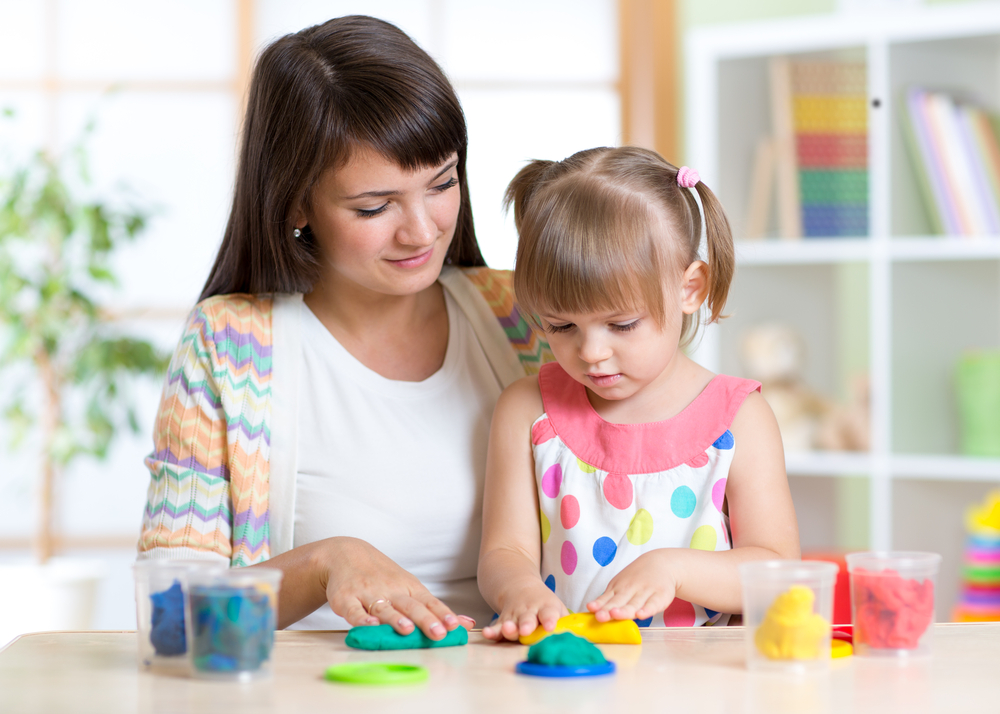- Overview
- Materials
- Activity
- Confidence Builder
- Extension
- Assessment
- Printable Bingo Cards
- Additional Resources
- Questions and Answers
1. Overview
Sight Words Bingo is our most popular sight words game. It takes the traditional Bingo game and replaces the numbers with words, motivating the child to read the sight words so they can play (and win!) the game. Children love playing Sight Words Bingo, and it is a great way to provide repetition opportunities in a large group setting.
Image: Sight Words Bingo
Each child gets his or her own Bingo Card with a set of words printed on a grid on the face of the card. The adult calls out words one at a time, and each time the child hears a word that is on their card, they cover the word with a marker. When the markers line up to make a complete row (horizontal, vertical, or diagonal), the child yells “Bingo!” and they are declared the winner of that round.
↑ Top
2. Materials
To play Sight Words Bingo, you just need Bingo cards and some markers:
- Bingo Cards Generator
- Printer paper or cardstock (approximately 110 lb / 200 gsm)
- Printer
- Bingo markers or counters (approximately 20 per player)
Use our Bingo Card Generator to produce one Bingo Card for each child, and print them out (preferably on a heavy-duty cardstock paper). You want to use a mix of newer words that you are currently working on, as well as some words you need to review. The Bingo Card Generator will also create a word list that you can use to help you run the game.
Video: Making Sight Words Bingo Cards
If you will be creating multiple sets of Bingo cards, it is useful to label each set on the back so that you can easily sort out the sets if they get jumbled together. (We learned this the hard way!)
You need some Bingo counters to mark each of the squares as the child plays the game. The counters pictured were purchased, but you can also use pennies, bread bag tags, pebbles, or anything else you have handy. If purchasing plastic markers, we prefer the markers that are plain and single-colored; multiple colors often prove too much of a distraction.
Some people use a Bingo Marker that the child uses to color the square instead of a counter. This gives the children a bit of practice gripping the pens, but it also requires you to hand out fresh Bingo cards for each round.
↑ Top
3. Activity
Each child is given a Bingo Card and a handful of markers (approximately 20 per child). The children are given 90 seconds to read all the words on their card. If there are any weak readers in the class, the adult should take this time to work with those children to help them read all the words on their card; otherwise they are going to be lost for the rest of the game.
Video: Playing Sight Words Bingo
The adult takes the word list and picks a word at random from the list. The adult reads out the word, uses it in a sentence, then reads out the word again. For example, if the word was plate, the adult could call out:
Adult: Plate. I ate dinner on a round plate. Plate.
The adult then marks off the word from the list to help them remember which words have been called already. The adult takes a long pause between each word to give the children time to play the game.
When the children hear a word called out, they are supposed to look at their Bingo card and see if they can find the word on the card (not every word is on every card). If they find the word, they place a counter on that square.
To win, a child has makes an entire line (five vertical, horizontal, or diagonal squares). For the purposes of making a line, the center space (free space) is considered to be automatically filled. When a child has a line, they yell out “BINGO!”
When a child claims to be the winner, ask her to read out her four or five words that made a line (more reading practice), and check these words on her card and on your word list to make sure she actually heard and marked the words correctly. If she played correctly, that child is declared the winner, and we move on to playing the next round.
We start a new round by having each child pass their card to their left, so that each child has a new card and is given the opportunity to read new words.
↑ Top
4. Confidence Builder
You can make the game easier by reducing the number of squares from the standard 5-by-5 to 4-by-4 or even 3-by-3, and by using a majority of older, more familiar words. You can also allow each child to retain their card for a few rounds so they become more familiar with their cards. As we mentioned, you can help a weak reader at the start of the game by having them read the words to you, correcting any mistakes they have made.
↑ Top
5. Extension
You can make the game harder by using a majority of newer and less familiar words. You can also add some time pressure and increase the pace at which you read out new words, so that the children have to read the words more quickly. Speeding up the pace of the game helps children master the words, as they are forced to truly read by sight and cannot rely on crutches such as sounding out the initial letters.
Alternately, you can make the game last longer by not declaring a winner until a child covers all the squares on their Bingo card.
↑ Top
6. Assessment
Bingo is not the best game for doing an assessment of individual children. But by observing the whole classroom, you can get a sense for which words are flummoxing the children and need more work, and the words that are becoming too easy and should be removed from rotation because the children have already mastered them.
↑ Top
7. Printable Bingo Cards
Remember that if you are playing with multiple children, each child needs their own card that is different from everyone else’s. Otherwise, everyone will get BINGO at the same time! The pre-made templates below include 30 different Bingo cards made from the same word list, so you can use them for a whole classroom of kids or just one child playing multiple games.
7.1 Custom Sight Words Bingo Cards
Use the Sight Words Bingo Card Creator to create your own custom set of Bingo cards. This generator lets you select from both existing sight words lists (e.g., Dolch and Fry) as well as allowing you to add custom words (e.g., allowing you to add students’ names or words relevant to a unit you are currently doing). The creator will also create a teacher’s word list to help you run the game.
To download a template, right-click and select Save As.
These materials are provided under the Creative Commons Attribution 3.0 Unported License. Essentially, this means you can do whatever you want with the resources, provided you leave the attribution hallmark on the resources. You may use these materials in the classroom, at home, as part of a for-profit tutoring business, to wrap fish, or for any other purpose your heart desires. You do not need to contact us for permission to use the materials. We want you to use them!
↑ Top
8. Additional Resources
- ABCya.com
↑ Top
Leave a Reply
Recent Blog Posts

Case Wars: Upper vs. Lower Case Letters
September 27, 2016
Some of our visitors ask us why all our materials are printed in lower-case letters as opposed to upper-case letters. We know that many preschool and kindergarten teachers focus on teaching upper-case letters first. The ability to recognize lower-case letters … Continued

Is It Dyslexia?
August 29, 2016
We sometimes get questions from SightWords.com visitors who are concerned that their child or grandchild may have a learning disability. Of particular concern is the possibility that their child might have dyslexia. Many people assume that dyslexia is a visual … Continued

SightWords.com at the Southeast Homeschool Expo
August 10, 2016
On July 29th and 30th, board members of the Georgia Preschool Association met at the Cobb Galleria Centre just outside Atlanta to attend the Southeast Homeschool Expo, a convention for homeschooling families and resource providers from across the Southeastern U.S. … Continued
© 2023 Sight Words: Teach Your Child to Read


How do you do sight word bingo?
When we download sight word bingo cards for our kids, these kinds of cards are helpful for our kids to recognize the common words that usually appear in the conversations or texts. So, it is helpful when it comes to using these bingo cards to enrich the vocabularies or lexicons for our kids.
Well, to play the sight word bingo cards, we are required at least two persons here. One is us as their guide or teacher and the kids themselves.
So, to use word bingo cards, we are required to recite several words at once. Every time the children catch the word on the card. they put the sign the word inside the card with a marker.
When the sign is marked sequentially and completely until the kids can find a horizontal, vertical, or diagonal pattern, then they are supposed to shout the «Bingo!» word. The one who shouts «Bingo» fastest using sight word bingo cards, they can be the winner.
What is sight word bingo?
Well, to play the word bingo cards, we are required to understand what actually sight word bingo is. Besides helping kids add more vocabulary, sight words can be determinate as a popular sight word game. Each player, specifically kids, will be given their bingo cards. They will also get a set of words in a form of a grid on the front page of the card.
The other player plays a role to recite a certain word. Then, every time they hear the word, they mark the word on the card. When they can mark the grids horizontally, vertically, or diagonally and it completes the grids on the card, they can win, as long as they are the fastest.
How do you make sight words fun?
We know, when it comes to using sight word bingo cards, we consider it because it seems fun. However, we never realize that the determination of the fun itself comes from us, not from the kids.
We know, in the beginning, the one who will learn about vocabularies by using word bingo cards are the kids, not us. So, we should consider that the fun is for them, not for us.
We need to understand that the repeated game, including word bingo cards game, can be boring for our children. So, we need to spice things up by combining some more methods that will be implemented when we are playing bingo cards.
Well, there are some ways to make the word bingo cards seem fun for our kids. Here are the chosen ways to spice it:
- Do a treasure hunt when playing sight word bingo cards.
- Match the pairs of the cards.
- Create cards of words and let them jump and grab the sight words that we can find on bingo cards.
- We can use bingo cards to be played like scavenger hunt too.









What are pre primer words?
When it comes to using sight word bingo cards, we need to know that the words inside the cards are the sight words, which are the most frequent words used in daily conversation or the texts we found everywhere. Well, the pre primer words can be considered as sight words too.
Well, the pre primer words can be defined as words that can be sounded by kids by using the simple phonetic rules. The phonetic rules that are appeared on the pre primer words are the five short vowels and silent «e». The silent «e» is usually found at the end of the words. Then, the previous vowel sound is recited long and followed by a consonant.
More printable images tagged with:
In this tutorial you’ll learn how to create from scratch a Sight Word Bingo Card generator so you can generate your own Bingo Cards. you’ll be able to use our 180 words prepopulated in the file or use your own.
What are Sight Words
Most used in English, sight words are high frequency words that young children, in kindergarten or Grade 1 are exposed to. The goal is to improve reading by identifying these words quickly
What is a Sight Word bingo game
Sight word bingo is a game combining the game of bingo with learning of sight words. An educator or a parent reads random sight words from a list and children mark the words on Sight Word bingo cards. Very similar with the game of Bingo but instead of numbers, the game uses words
Learning sight words is a very important activity for pre-kindergarten, kindergarten and grades 1 and 2 kids. It is the foundation of learning to read.
The winner of the game is the first person to mark off five numbers in a row or column.
How to find Sight Word Cards
Making materials for this game can be a challenge. Often educators have to Sight Words printable cards with pre-defined words that only get used a few times. These cards can become predictable.
Another way is to make these Bingo cards by hand, printing blank templates and writing the words.
Can I generate Sight Word Card with random words?
In this tutorial you’ll learn how to make a generator in Excel for Sight Words Bingo cards. This generator can use your own list of words and will randomize cards with the press of a button allowing you to print each card once reviewed on the screen.
Can I just download the Sight Word Card Generator
Yes, if you have trouble following the tutorial to create these yourself, don’t have the time or the simply don’t feel like it, see the link at the end of the post to learn how to download a fully customizable Sight Word Card Generator in Excel ready to use.
How to make a Sight Word Card Generator in Excel
To make this you need Excel 2016 or above and basic Excel skills.
Step 1 – Create a card template
The first step in creating the sight words bingo generator is to create the layout of the card. In a blank Excel Sheet, increase the row and column sizes to create a grid like below. Make a 5×5 grid for the words and merge the first 5 cells to leave room for a title. Leave a blank row and column on top and on the left in order to see the card properly and create borders. Add borders to all the cells as per image below.
Step 2 – Create a list of words
On another sheet, create a list of words. In this example, I’ll use 180 words and I’ll place them in the column I with an index from 1 to 182 in column H.
The great part about this is that you can customize this with the words you want, with familiar words, names of kids in the class, names of streets in your town, names of teachers in the school, etc.
Step 3 – Create the Index
This is where the magic happens. Well, the first part of it at least.
In the next step, create an index of unique random numbers from 1 to 180. This is done with an array function.
First, in cell B1 put the number 180. This is the total number of words and will be used in the formula below.
In the cell B3, copy the following formula. Once copied, hold down CTRL+SHIFT and press ENTER. That is the way to enter an array formula.
=IF(ROW()-2>B$1,””,SMALL(IF(COUNTIF(B$2:B2,ROW($1:$180))<>1,ROW($1:$180)),1+INT(RAND()*(B$1-ROW()+ROW(B$2)))))
The formula will look for all the existing values in the column B and generate an integer number random between 1 and 180 that is different from the numbers already generated.
Copy the formula down to cell B182 (first 2 cells are already use with the max number and a space left in B2 for clarity)
Step 4 – Copy the words in the Bingo Card
In this last step, in the first sheet containing the bingo card, use the following formula to copy the words. The formula will copy look at the first 15 cells and find 15 random numbers out of 180. It will then bring the words corresponding to those numbers from the words list.
In this example the word “jump” is delivered by the formula =INDEX(‘Formula Sheet’!$H$3:$I$181,’Formula Sheet’!$B10,2)
This formula looks into the second sheet for the number in B10 and finds the randomly generated number 2. In the next step, the word found in the 2nd position in the word list is retireved.
To fill up the Bingo card, use the formula above in each of the cells replacing the $B10 with values from $B3 to $B26. Use your favorite symbol in the middle of the card for a fun design.
This is how it looks when completed. You just have to press F9 and the formulas will generate you a new card that you can print.
Download the “ready to use” Bingo Card Generator
If you want to skip all the work and just download the file, it is available for sale on
Etsy or TeachersPayTeachers
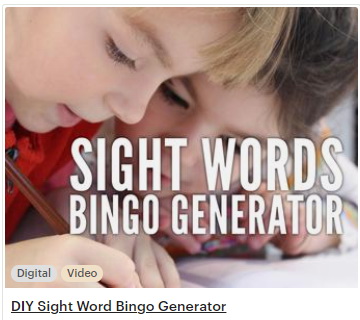
The product you download from there has the formulas all hidden into a sheet and contains a teacher sheet where you can type all your words in.
You’ll also find other related products in our
Etsy Store or TpT Store.
Sight words are the most common words children will encounter when learning to read and often do not follow phonics rules (you can find some of the most common sight words, also known as “high-frequency words” here). Because of this, sight words must me memorized (and they are the one of the few things I will ever tell you to have your child memorize). This sight word bingo game is a simple and fun to help your kindergarten child learn them.
I don’t recommend sight word bingo for children 2-3 years old. Big Brother has been watching hours of TV this week since he has been so sick and has really enjoyed the Meet the Sight Words DVD that I did a product review on several months ago (which he loaded into the DVD player himself…I just know he’s going to break it one of these days)!
We just got this DVD back from loaning it to a friend (because it wasn’t developmentally-appropriate for my boys at the time). Here I want to show you how simple it is to create your very own FREE sight word bingo game to go along with the sight words DVD.
Related Post: Is Your Child Kindergarten Ready?
Here’s what you’ll need:
- a piece of paper
- crayon
- some cereal or candy
Instructions for Sight Word Bingo:
| 1. Make a 3×3 table on a piece of white paper. Write eight of the sight words you wish to review in each box, with a “free space” in the center. |
| 2. Call out the words and let your child use cereal pieces or small candies as “markers”. |
| 3. When he/she gets 3 in a row, they can shout “BINGO!” Big Brother had so much fun yelling out “BINGO!” |
This post was first published March 2011. Updated 2018.
Click here for more great reading resources and ideas:
How To Teach Your Child To Read
30+ Word Family Activities
More Fun Sight Word Activities For Kids
The Top 10 Reading Apps For Kids
Why I Don’t Love Bob Books
Dr Seuss Activities For Kids
5 Fun Ways To Encourage More Reading In Your Home
What Are Sight Words?
What’s the most common word in the English language? It’s the. Imagine pausing every time you ran across this word in a book, on a poster, or in a magazine. Even the simplest texts would become grueling to read.
Common words in the English language (like the) are often grouped together in the early stages of reading — these are what we mean when we speak about sight words. Sight words aren’t easy to sound out or decode, especially for young readers who are just learning the rules to sound out words, so we memorize them (or, in other words, recognize them by sight).
These words occur so frequently that readers, including very young readers, need to know them instantly. And once your child learns basic sight words, they won’t need to spend a lot of time trying to decipher these high-frequency words.
Sight words are dually helpful in this way: they help your child instantly recognize familiar words and help them bypass trying to sound them out because, phonetically, they often don’t make much sense!
Why, for instance, doesn’t the word was rhyme with has? Why doesn’t have rhyme with gave? The first of each is phonetically irregular, despite the fact that they’re some of the most common words in the English language.
As adults who learned to read many years ago, we don’t think twice about why we pronounce sight words the way we do. We also don’t consider why was and has or have and gave don’t rhyme.
Our reading of these words happens automatically, and that’s what helps us read fluently. But early readers who are learning the rules of the English language need a little help.
That’s where sight word games come in. We’ve compiled a list of fun activities that you can do with your young reader to help them learn sight words. And these activities are great for both you and your child.
For you, a majority of the activities require minimal supplies and prep time, which is great for a busy parent. For your child, the games are lots of fun, so they can learn without even realizing it.
But before we get to these fun activities, let’s be clear on the specific sight words your child will need to be familiar with.
What Words Should You Use For Sight Word Games?

Decades ago, an educator named Edward Dolch developed a list, used widely by teachers, of the words most frequently used in children’s books. He identified 220 “service words” and 95 nouns. The words are broken down by levels: pre-primer, primer, first grade, second grade, and third grade.
Some of the 315 words that comprise the two lists are very easy for kids to learn: a, I, it. Others offer more of a challenge. For instance, the pre-primer list includes you, said, and where.
Here is a list of the 45 sight words we include in our Beginning Reader and Growing Reader pathways:
And, a, the, on, is, to, I, was, you, your, yes, no, do, they, with, that, are, said, girl, boy, were, this, look, like, want, has, of, what, see, go, play, here, very, good, his, her, there, where, have, walk, talk, know, blue, green, little.
Are Sight Words Just High-Frequency Words?
The short answer: not quite. But it’s a little more complicated.
While the terms sight words and high-frequency words are often used interchangeably, there are some key differences.
High-frequency words, as the name suggests, are the most commonly found words in our written language. For example, like, the, it, etc., are all high-frequency words. And some of them follow standard phonetic patterns while others don’t.
On the other hand, though sight words may frequently occur in text, what sets them apart is that they do not fit standard phonetic patterns or the applicable phonetic rules are more advanced. Therefore, they often need to be memorized.
In essence, many high-frequency words can become sight words once a learner reads them instantly without trying to decode them.
One of the best ways to help kids get to this stage of word recognition is to continue exposing them to sight words. This is where games come into play!
Parents wear many hats — companion, guidance counselor, teacher, and so on — and all of them are crucial. But one of the most enjoyable parts of being a parent is cutting up with your child and having a little bit of fun.
The good news? Your child can learn and have fun at the same time while playing these games!
We know how invested you are in your child’s future. We want to help you set them up with the best tools for success in the easiest, most enjoyable way possible. So here are some sight word games that will get their brain working and their belly laughing!
1) Sight Word Twister
This is a version of the popular game Twister. If you want to try this game, choose between six or twelve words to work with at a time.
That number will depend on your child’s comfort level with sight words, their attention span, and the amount of time on your hands! Feel free to start small and work your way up with additional rounds.
Write each sight word you chose on a blank index card. Then, clear a space on a wooden or linoleum floor and tape each word so that they are all just a little bit apart from each other (make sure your little one can still reach!). Now the fun begins.
Tell your child to find one of the words — have, for instance — and place an elbow on the word. Then they must put their knee on a second word and their nose on a third. You can go on to a fourth, fifth, or sixth word, or you can stop at three.
Your child isn’t the only one who has to twist and turn. In our experience, children want you to play along with them and be just as silly about the shapes you make with your body!
Plus, giving your child the chance to choose the word you have to touch helps them practice reading their sight words. Being the “game boss” will give them another opportunity to learn!
Your child may have a blast with this game and insist they want to keep going, but it’s best to limit your play to two or three rounds per player. That will help keep them from getting bored with the game (and give their brain a chance to rest!).
2) Pick The Word
If you want to try this game with your child, write your six sight words on index cards — one word per card. On a separate sheet of paper, list the six words twice — one list for you, one for your child.
Next, place the index cards with the words facing down. You can take the first turn. After picking a word from your list, flip four of the cards so the words are showing. If you uncover the word you’re seeking, you can cross that word off your list.
At the end of your turn, flip the cards back over, mix them up, and give your child a turn at flipping four of the cards.
If on your first turn you did not find the word you wanted, you have to hunt for the same word on your next turn. If you found the word you wanted, pick a second word from the list.
The first player to cross off four words wins. To make the game more challenging, you can turn over three cards per turn instead of four, or you can aim to find all six words instead of just four of the words.
3) Word Match Up
On a sheet of paper, write your six sight words three times. Your child’s job is to draw a line that connects each word to the two identical words on the sheet.
After drawing a line that connects the first three words, it’s time to connect the next three matching words.
This game may sound pretty easy, but here’s the hitch: your child cannot cross any line already on the page. The page gets pretty crowded with lines, so this is not an easy accomplishment. They may end up with some kooky, loopy lines — and that’s the goal!
Try it yourself. The more you stumble and struggle, the more your child will enjoy the game!
4) Word Toss
If you’d like to give this game a go, write each sight word on its own Post-it® and then stick the words on the floor. You can also stick them to a wall or a door.
Get a soft toy, like a small stuffed animal, and stand a few feet away from the words. Choose a word and say it aloud. Your child must toss the toy so that it hits the right word.
Your turn next. Your child picks a word for you to hit. The game is more fun if you miss, so don’t worry about having poor aim. You can play to see who reaches a set number of points or who has the most points after five or six rounds.
5) Sight Word Bingo
Selecting from the Dolch lists, you can make custom Bingo cards that use sight words. It makes the perfect, classic sight word game for your child!
We’re sure you know how Bingo works, but just in case, we’ll give you a refresher. Set up one regular bingo board each for you and your child. If more people are playing, you might have teams or make sure you have one card for each player.
Tell your child to pick 24 words. The same words will go on both boards, but in different places on each board. Then write the words on index cards. Turn the cards over and mix them up.
Players will take turns picking cards — reading the words and finding each word on their card. When they find a word, they will cover it with a token or a penny. The first person to get five words in a row wins. Bingo!
6) Sight Word Go Fish
Introducing your child to this game will be easier if they have prior experience with Go Fish. If they don’t, that’s OK, too! It’s easy to learn and a blast to play.
If you’d like to give this game a go, use index cards or cut pieces of paper for playing cards. You can write matching pairs of whichever sight words you want your child to focus on. It’s important that there are at least two cards for each word — the point of Go Fish is to match them!
We recommend starting with 20 cards (ten sets of words) and giving each player five cards in their hand. You can decrease the number for younger children and increase the number (or difficulty) of words as your child gets more comfortable playing.
Tip: For younger kids, you might let your child lay the words on the floor and hide them from you by using a book as a shield rather than them holding the cards in their hand, as that can be challenging.
Your child will read out the word they want to match. If the word is an, for example, and you have the other an card in your hand, then you have to hand it over. If you don’t have the matching card, then you tell them to “Go fish!” from the pile of extra cards.
If your child is a little older and experienced with some sight words already, feel free to sprinkle in words they already know.
The familiarity will help their confidence as they work with their new words. We all like the feeling of knowing how to do something correctly — reinforcing their knowledge positively (like through a game!) will help keep them encouraged to learn more.
7) Sight Word Scavenger Hunt

This option is super versatile — it can be played indoors or outdoors!
We all love a good, old-fashioned scavenger hunt. Instead of hunting pastel eggs filled with candy, though, this game has your child hunting their sight words.
If you want to try this game with your child, write the sight words you want to use on a stack of index cards and number them 1-10. It may also be beneficial to write the words on a separate sheet of paper for your child to reference so they know the selection.
Then make a list of clues for those same words on a separate piece of paper. For example, one clue might be, “I __ a cookie” (have) or, “What word rhymes with buzz?” (was).
Next, simply hide the cards in places familiar to your child. You can use the backyard, a favorite park, or your whole house if it’s an extra rainy or cold day. They’ll use the clues to figure out which words to search for.
Tip: make sure you remember where you put the cards! You’ll need to keep in mind the different locations while you write out your sheet of clues. The numbers on the cards should coincide with the clues. Have fun with some wacky rhymes and hints that will get your child laughing!
The clue list can also be made optional. If you’re working in a small space, your child can always just try to find however many words you hid. If they know to look for 10 cards, then they can just run wild through the room (hopefully not upturning furniture!) searching for them.
 Sight Word Tower
Sight Word Tower
This is an easy, fun sight word game for your child to try that we guarantee they’ll love — because it involves things crashing and making a mess (but one that’s easy to clean up, we promise!).
While trying this game, you’ll need a stack of paper or plastic cups that you don’t mind writing on with a marker. Near the rim of each cup, write a single sight word you want your child to focus on (that way all the cups are the same).
Then your child simply picks up the cup, reads off the sight word, and tries to create a “tower” or “castle” out of all their sight word cups! Here’s the rub — you can only have three cups on the floor! All others must build on top of those three and cannot be inside each other.
The trick is to make sure the cups don’t fall over — if they do, you have to start again! They win once they stack all the cups (and read all the sight words!).
9) Volleyball

This sight word game is easy and simple as well. All you need is an inflatable beach ball that you can write on with a permanent marker.
For each “sliver” of the beach ball, you’ll simply write down a sight word. Then you and your child will toss the ball back and forth. If you want to simulate a proper volleyball game, then you can do this over a net propped up in a yard.
When you catch the volleyball with your hands, you have to read aloud the two words your thumbs touch. For example, your left thumb may touch the word “blue” while your right thumb touches the word “our.” Once you read the words, toss the ball back to the other player.
You don’t have to write in-between the lines on the ball, either. To make it wilder (and challenging!), you can write words all over the ball. That way the words your child “catches” are even more unpredictable.
10) Sight Word Path
All you need for this fun game is masking tape (or painter’s tape), index cards, and a marker.
First, write one sight word on each index card. Then, arrange your cards face up on the floor to make a “path.” This path doesn’t have to be straight. It can have as many twists and turns as you’d like (i.e., over the chairs, under the table, etc.).
When placing the cards, make sure they are close enough to each other that your child can step from one card to the next. Important tip: Don’t forget to tape them down with your masking tape to prevent slips or falls. Safety first!
Your child will need to stand at the beginning of the “path” you’ve created and read the word on the first card out loud to start the game. Then, when they’ve read it correctly, they step onto that card.
The goal is to read the next word, and the next, and so forth until they reach the end of the path. If you’re playing with multiple children, each child can start once the player before them has gotten to the end of the course.
Once your child is comfortable with this game, encourage them to read and walk more quickly. If they are just starting to learn sight words, you can first introduce them to easy terms and increase the difficulty as they go along.
This activity helps kids read sight words quickly and gain confidence through repetition. They’ll also be burning a lot of energy in the process!
11) Hangman
Hangman is a popular game that can also be great to help children learn sight words. To begin, grab some index cards, a marker, and some sheets of paper.
Write one sight word on each index card. Then, use your marker to draw a Hangman “scaffold” on a sheet of paper. (You can also use a chalkboard and chalk for this activity if those are available.)
Next, place the sheet of paper in front of your child, and put the index cards face down next to it. To play, have your child draw a card from the stack and read it aloud. Give them five to 10 seconds to do so.
If your child mispronounces the word on their card, show them how to add the first body piece to the hangman structure (e.g., the head). That index card will then return to the bottom of the stack for them to try again later.
(Remember to help them pronounce this word before returning it to the stack so that they’ll be better prepared next time.)
If they pronounce the word correctly (yay!), move that card to a “correct” pile. Then, continue playing until all the Hangman body pieces have been added — head, torso, arms, and legs.
Once the game is over, have your child count all the cards from their correct pile and tally this as their score. If you’re playing with more than one person, the one with the most cards is the winner! Note: Each child will need their own sheet of paper with the Hangman structure.
If you’re playing with very young children just starting to learn sight words, you can take two turns to draw each body piece (e.g., for legs, you can draw from the waist to knees, then the knees to the feet). This will give them more chances to get words right before the game ends.
If your child or children are more familiar with sight words, begin the game with the head and torso already drawn, giving them fewer chances to make mistakes.
Also, since any mispronounced words get returned to the stack of cards, your child will be exposed to them again, giving them more opportunities to get the pronunciation correct.
12) Sight Word Discovery
Most kids love discovering interesting items in their homes or backyards. Sight Word Discovery takes this natural love for exploring and mixes it with learning.
You’ll need a few items to get started — index cards, a marker, a large plastic tub, a lot of sand, and craft sticks and rocks (these are optional).
First, write a sight word on each index card. Then, fill the large plastic tub with sand. While filling it up, randomly put the index cards into the tub. You can add some sticks and rocks to the mix as well.
For this game, your child will need to act as a paleontologist who’s on the hunt for sight words (no fossil-finding today!). Every time your child finds a new card, have them read it aloud.
Wow! Look what I found! It’s “the!”
Sometimes parents find it difficult to encourage their children to participate in learning activities or games. But, since children often love playing with sand or dirt, you don’t have to worry about that here!
13) Sight Words On Playdough
Hands-on learning activities are a great way to help children grasp many concepts. That’s because they’re very interactive, allow for creativity, and help to make abstract concepts real.
All you need to get started with this game is playdough, magnetic letters (or letter cutouts from cardboard paper), index cards, and a marker.
The goal is to encourage your child to construct sight words using the magnetic letters. They will then place these letters upright on the playdough.
To play, place a stack of index cards in front of them, face down. Each index card will have a sight word. When your child draws a card, they’ll need to read it aloud and then construct the word on the playdough.
For example, if your child draws the word like, they’ll need to read it, find the word’s letters, and place them upright on the playdough.
To make things a little more interesting, give your child a timer and ask, “How many words can you construct in five minutes?”
This is a great hands-on learning activity to help kids build their own sight words. And playing with multiple children can add some friendly competition.
What About Reading?

Here at HOMER, we’re big advocates of early childhood reading.
Not only do books expose your child to sight words (and high-frequency words), but they also help improve their vocabulary, strengthen their concentration, and expose children to the world around them.
In addition to playing the above sight word games, you can also continue to read regularly to your child to familiarize them with sight words.
Here are a few activity books you can also check out:
- Learn to Read: Sight Words Storybook (For three to five-year-olds)
- Sight Words Word Search Book for Kids (For four to eight-year-olds)
- 100 Sight Words Kindergarten Workbook (For four to six-year-olds)
- Sight Words Activity Book (For five to nine-year-olds)
- Sight Words and Spelling Workbook (For six to eight-year-olds)
Sight Word Games Are Fun And Functional

Games like these are easy to play, require very little equipment, and are highly effective. The more you play these or similar games, the faster your child will learn lots of sight words, which will make them stronger, more confident readers.
We hope you found some interesting options in this list that you’ll try with your child. Remember, sight word games are all about having fun and learning at the same time! Your child will work up their stamina the more they play these sight word games.
And as always, we’re here to offer a helping hand any time you need it. If you find yourself struggling to fit in practice time for your child’s sight words, you can leave them in our hands with the HOMER Learn & Grow app!
Frequently Asked Questions
What is Bingo?
Since its invention in the 1920’s, bingo has been and continues to be one of the oldest and most loved games that you can find all over the world. Bingo is a game of chance where numbers are drawn between 1 and 75 or 90 (depending on where in the world you are).
All of the players all have a bingo card with at least 16 different numbers on it. Depending on where you are located, the game may have slightly different rules or structure because different jurisdictions have evolved their own version of the game.
The basic premise is that players will mark off each number that they can match on their bingo card. How bingo works is, when a player has a row, column, or diagonal completely covered, they will call out “bingo!”
Who can play Bingo?
If you’re wondering who bingo is good for, the answer is everyone! People of all generations love bingo, and the teachers who use WordMint to create their bingo templates find that their students love it.
Bingo can be played with numbers or with words, so there are literally countless combinations that you can create for templates, and it is easy to customise the template to the age or learning level of your students.
How do I create a bingo template?
A bingo card template in word can be a bit difficult to work with. For the easiest bingo card templates, WordMint is the way to go! With over 1000 existing bingo card templates to choose from you could find the perfect card already existing, or you can create your own!
Simply log in to your account and use our template builders to create your own custom bingo templates.
What is WordMint?
WordMint is your go to website for creating quick and easy templates for word searches, crosswords, bingo and countless other puzzles. With over 500,000 pre-made puzzles, you can select one of our existing templates, or create your own.
Do you have printable bingo templates?
Absolutely! All of our templates can be easily print, or you can save your work as a PDF to print for the entire class. Your cards get saved into your account for easy access and printing in the future, so you don’t need to worry about saving them at work or at home!
Do you have bingo templates in other languages?
Yes! We have full support for bingo templates in Spanish, French and Japanese with diacritics. You can use other languages just for your titles and instructions, or create a bingo puzzle completely with words instead of numbers.
Can I convert my bingo template into other puzzles?
With WordMint you can create a template and then use it to convert into a variety of other executions — word searches, word scramble, crosswords or many more.
Is Bingo good for kids?
The teachers that use WordMint love that they are able to create bingo templates that challenge their students cognitive abilities, and bring them together in a fun social environment.
You can theme your bingo games, and the ability to use different languages means that you can work language learning into your lessons as well. Because WordMint templates are totally custom, you can create a bingo template for kids that suits their age and education level.


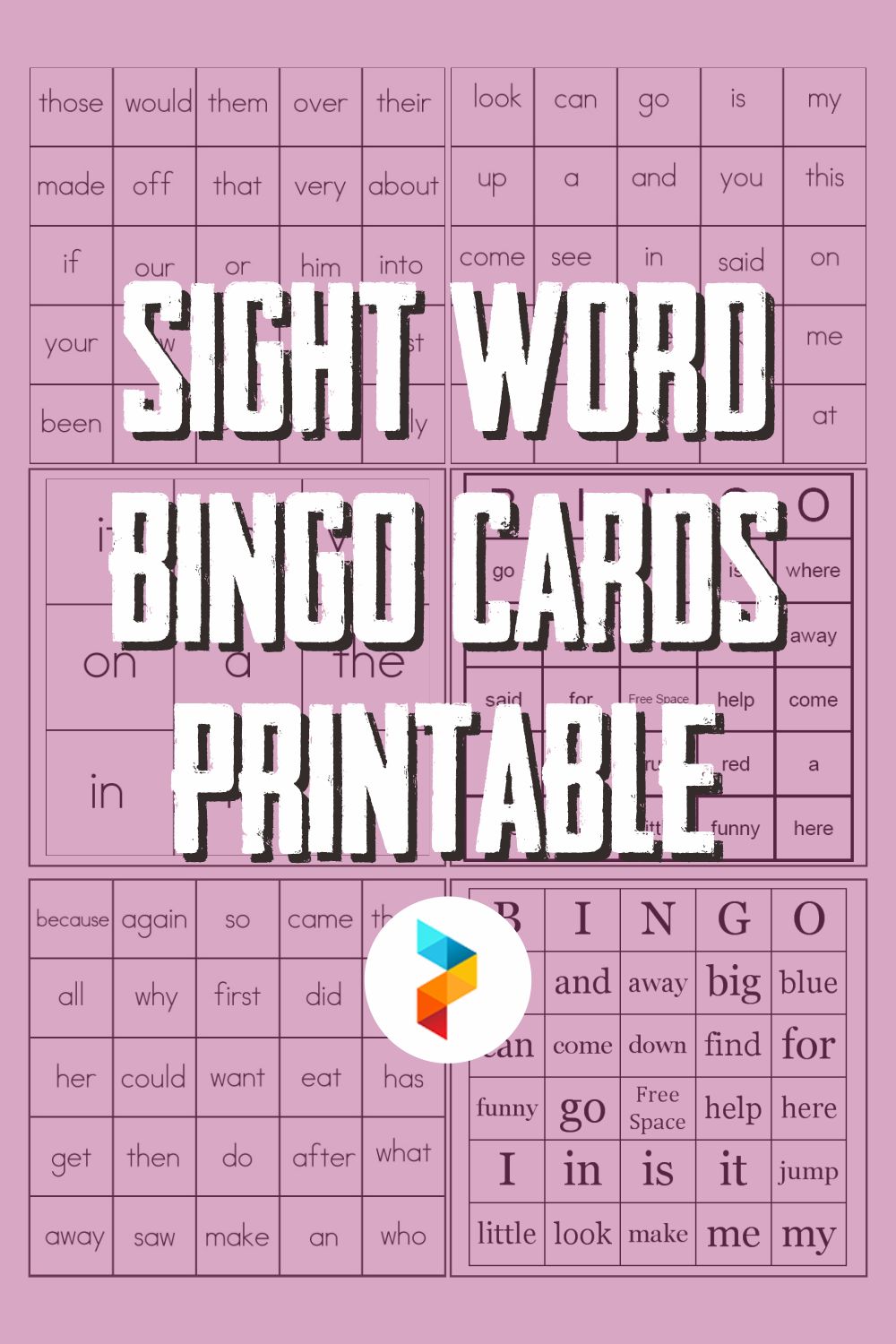
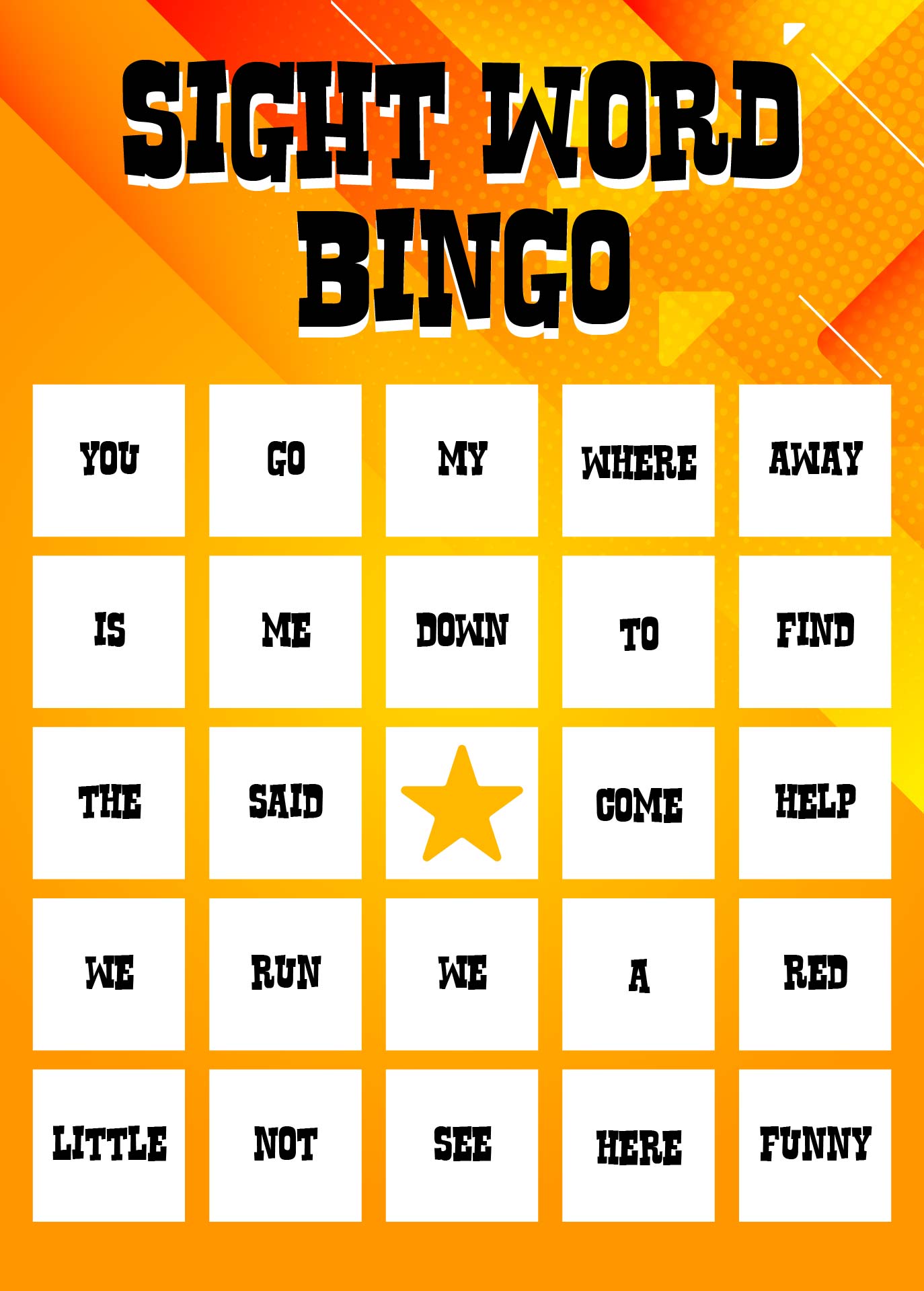

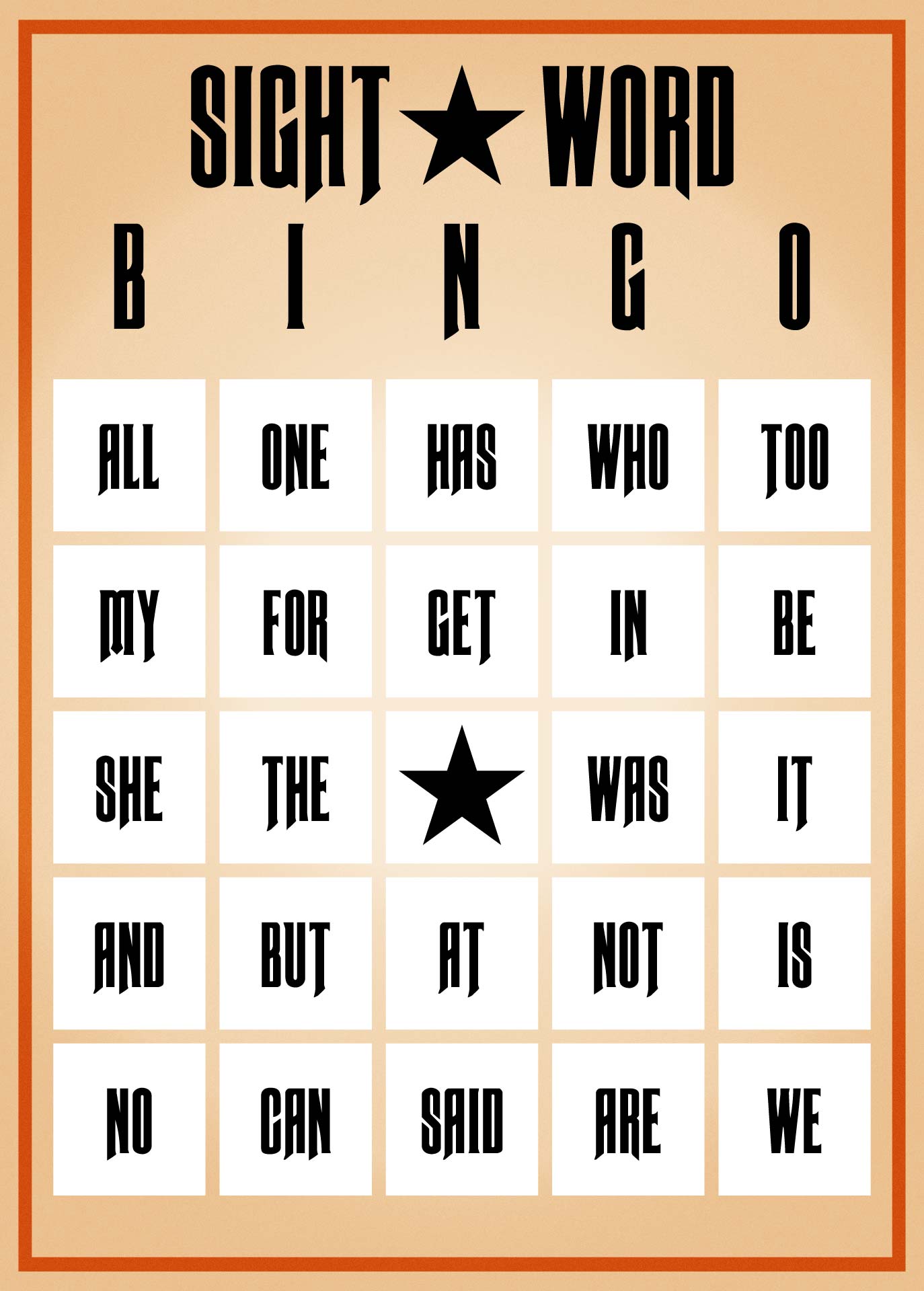
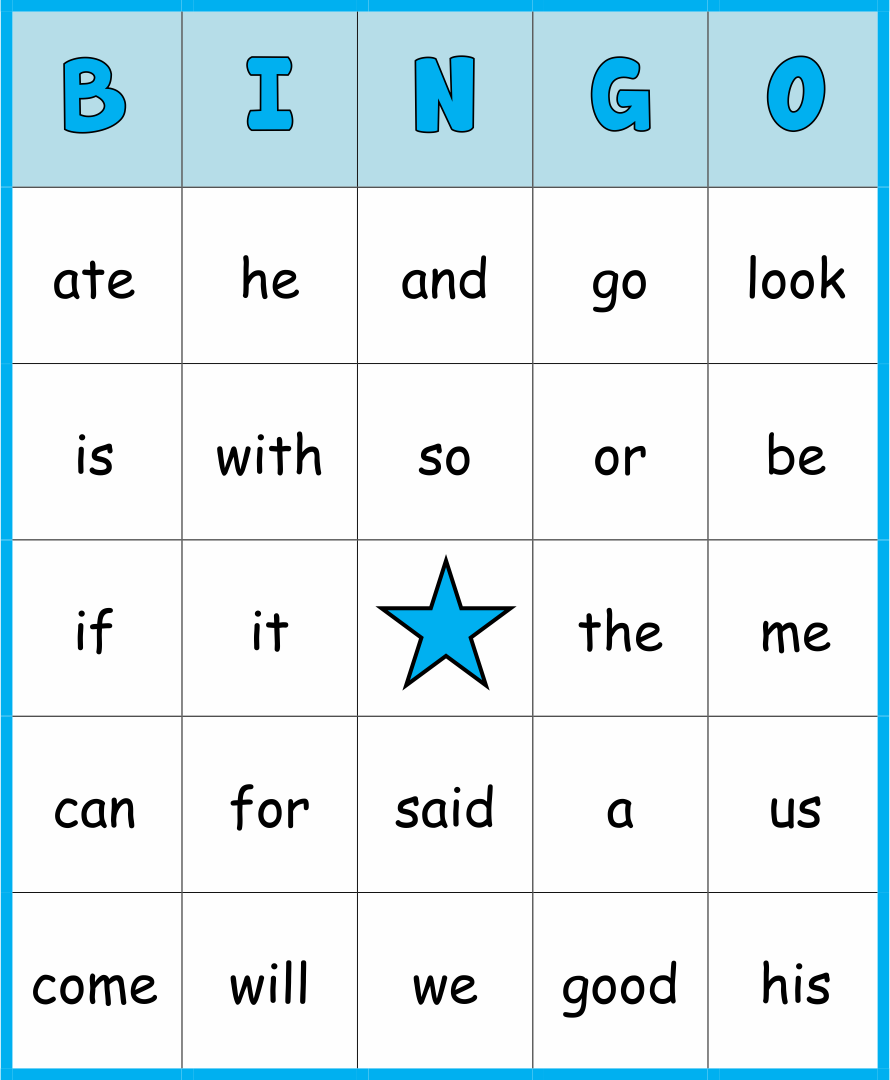
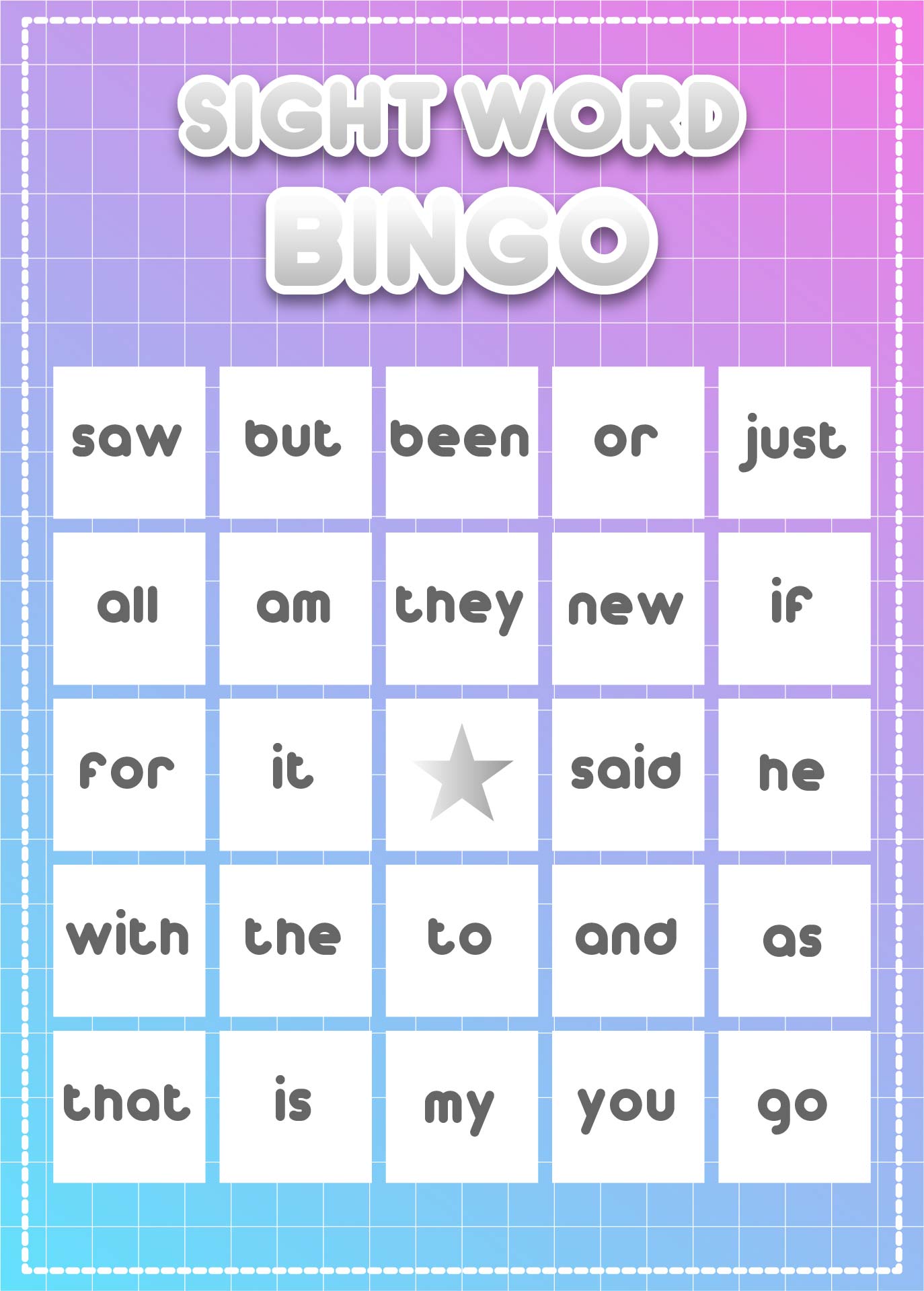
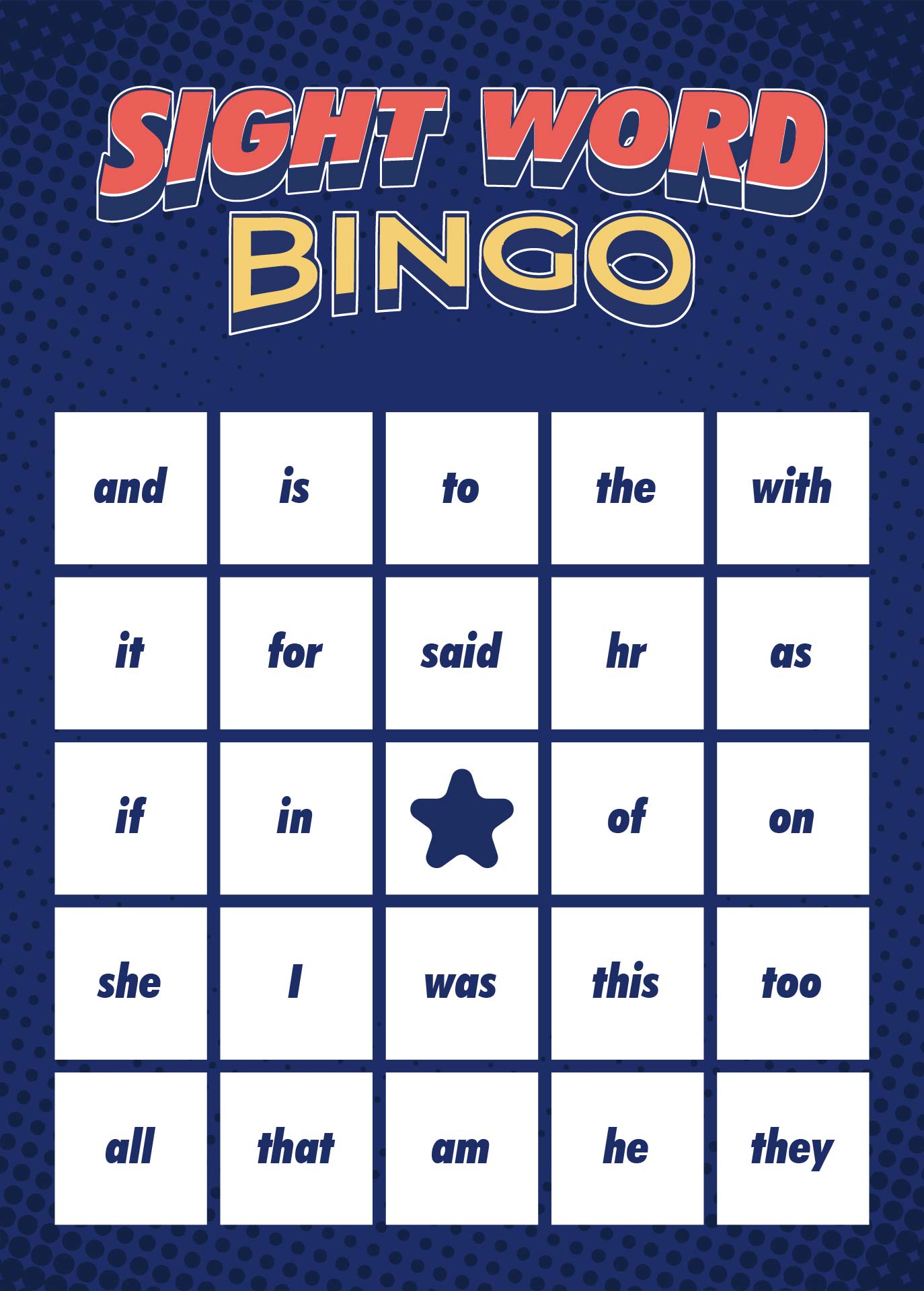
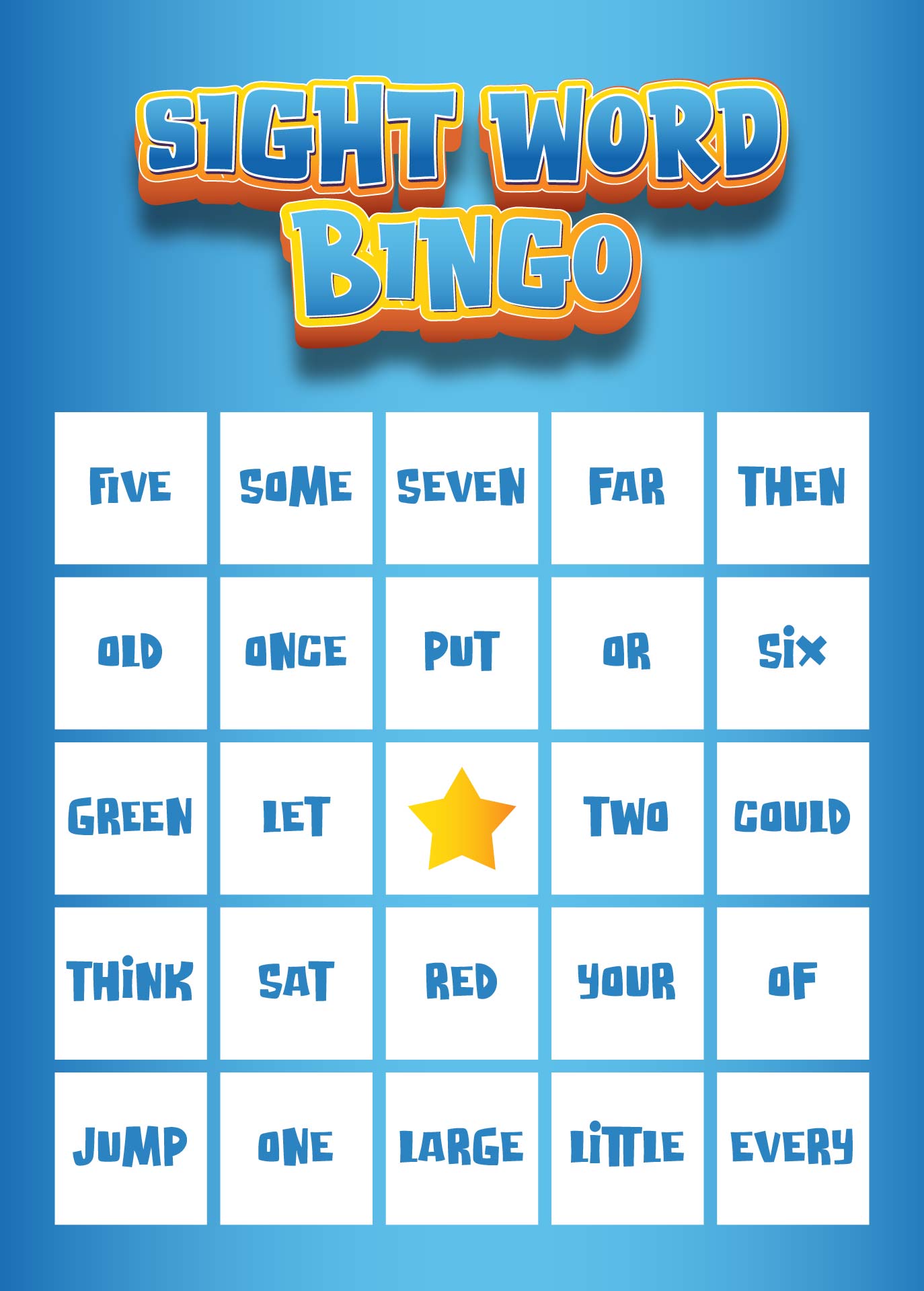
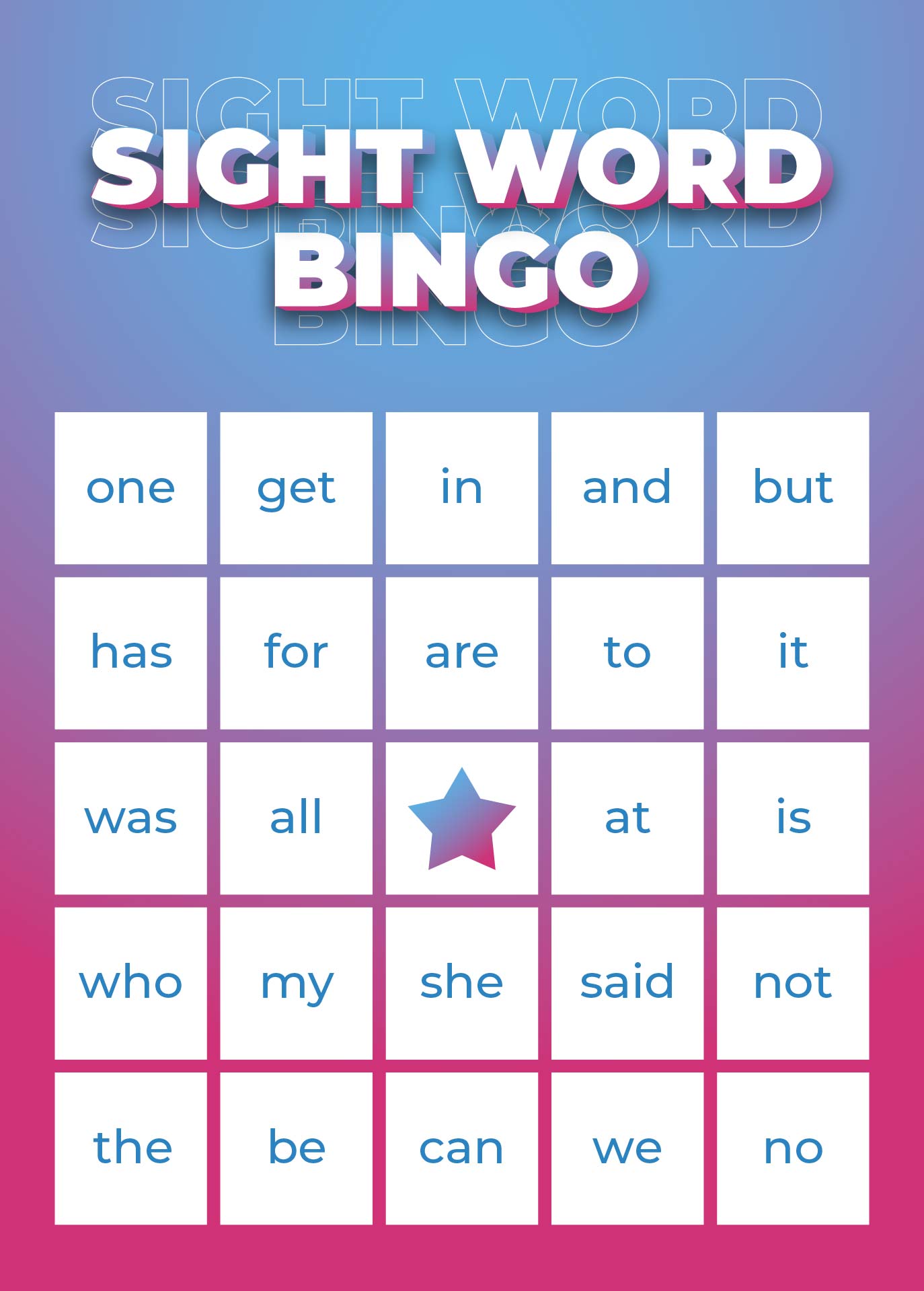
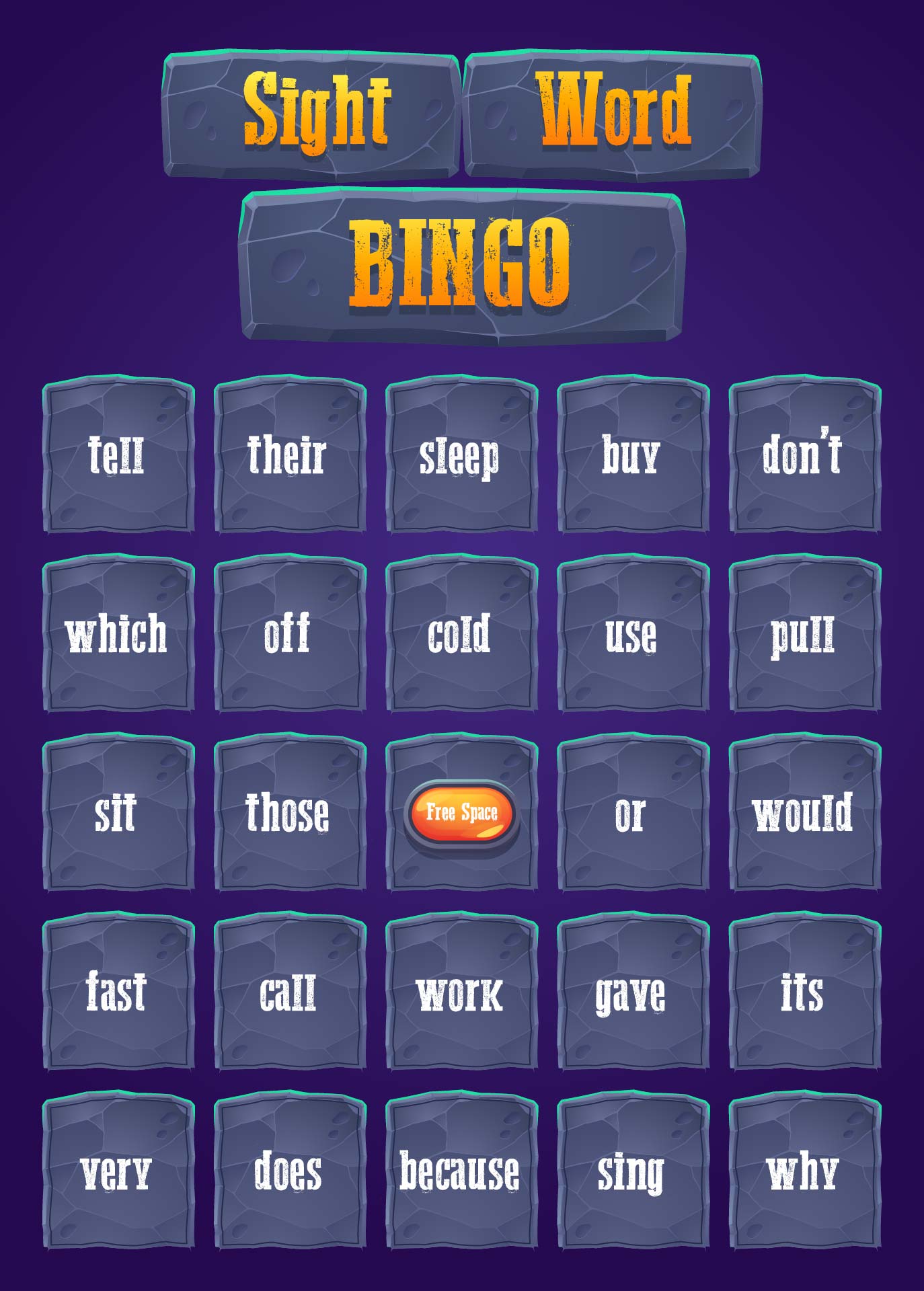
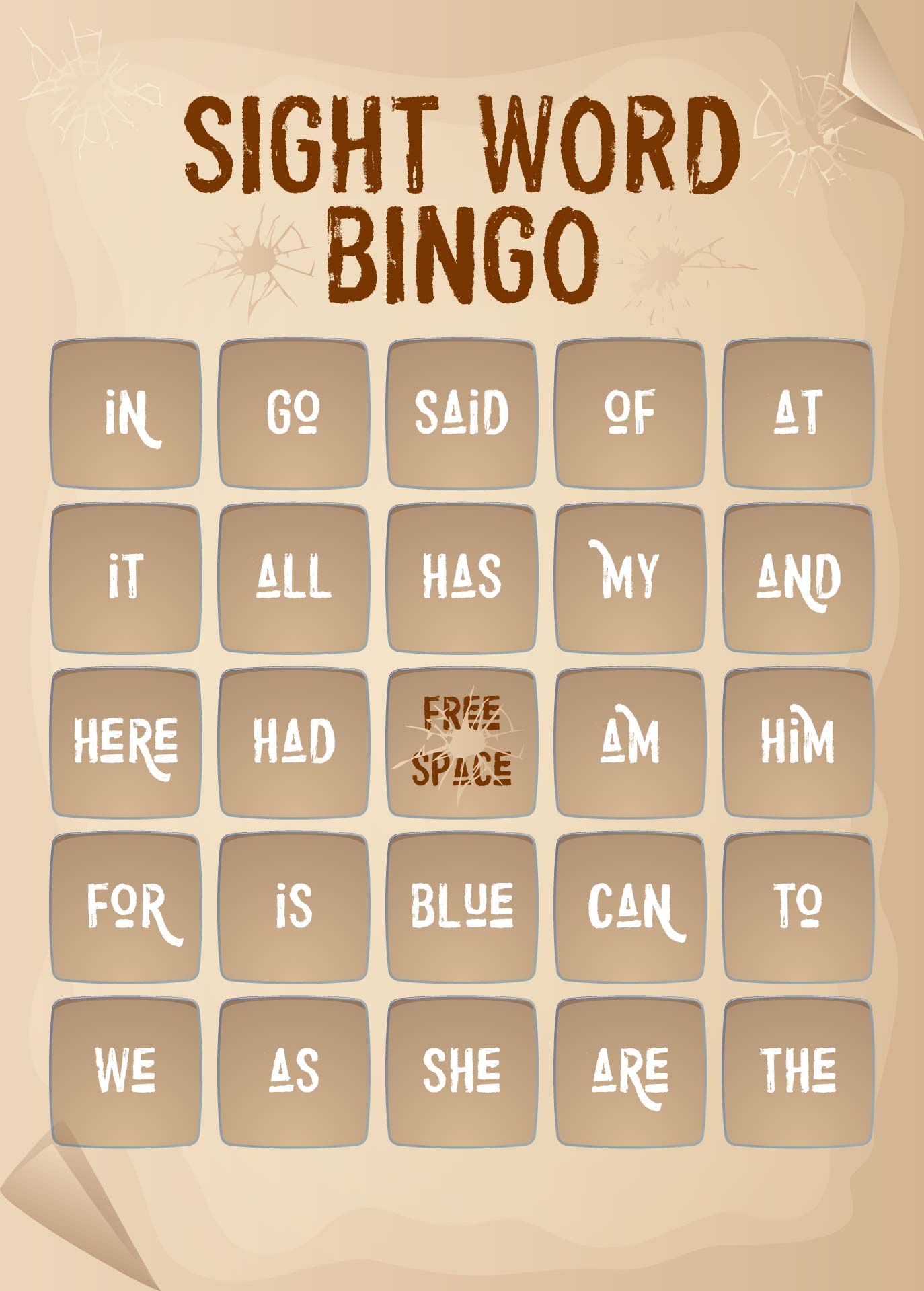
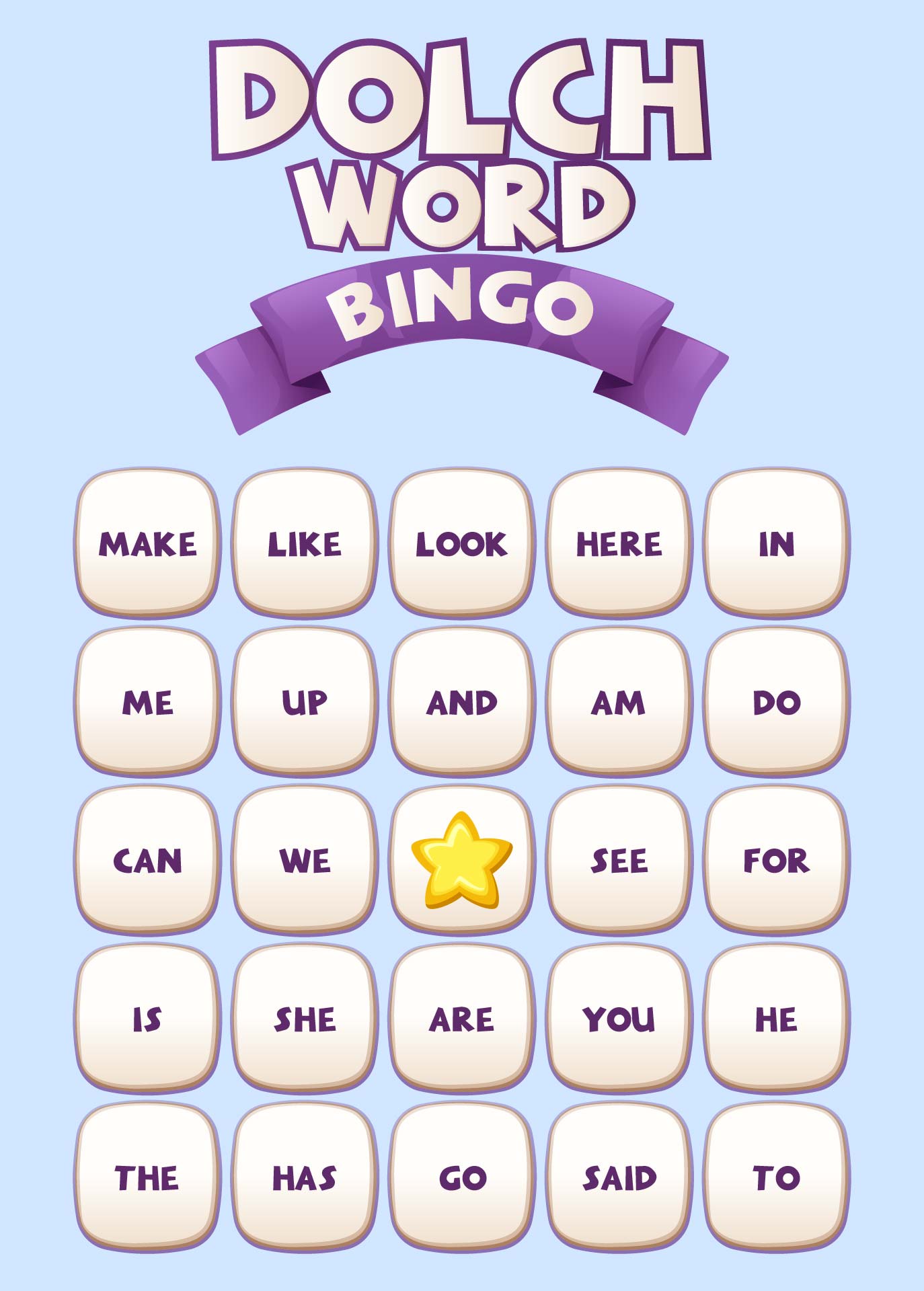







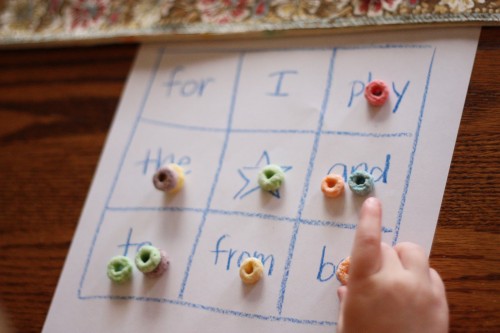
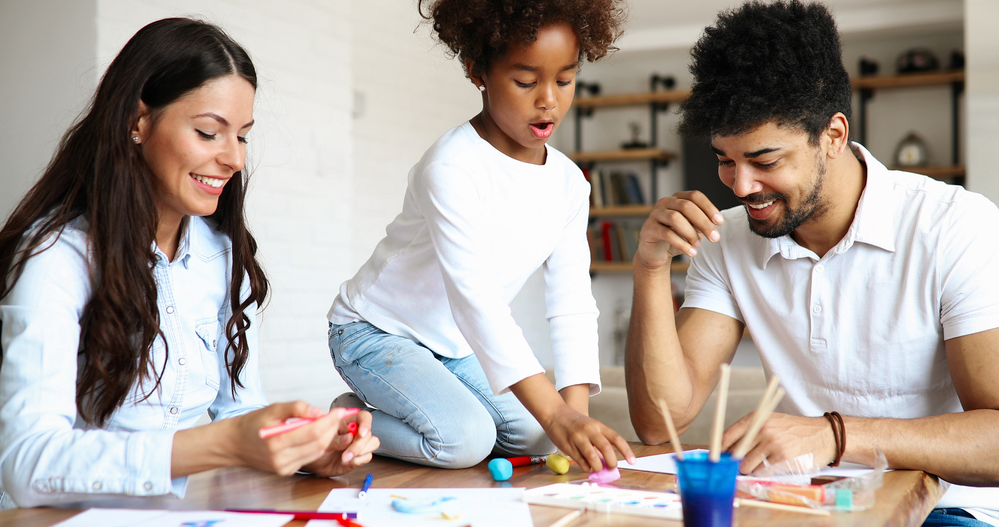
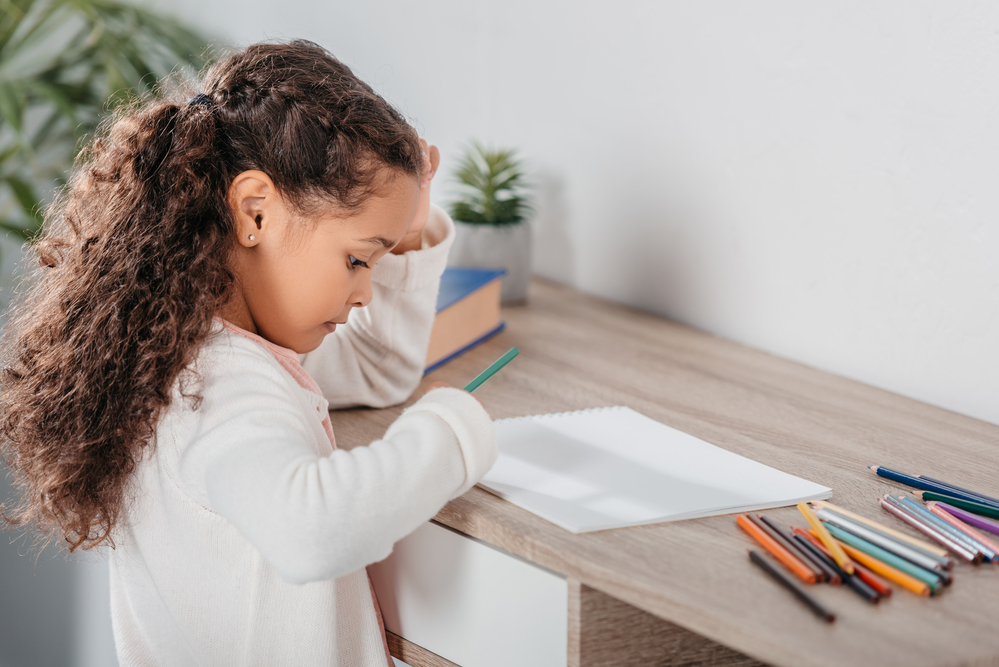
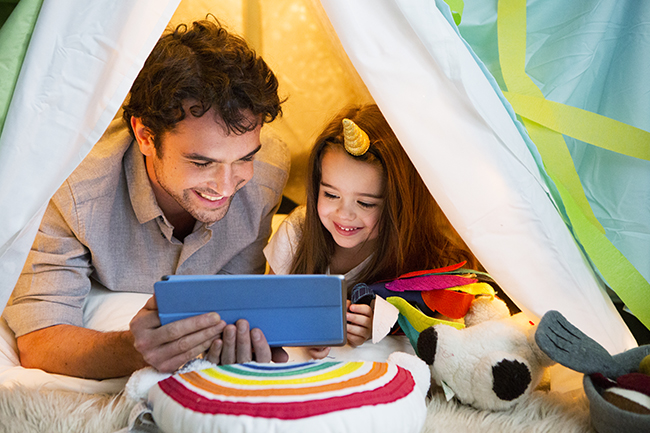
 Sight Word Tower
Sight Word Tower
